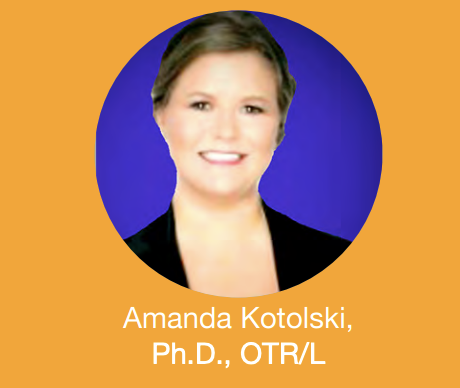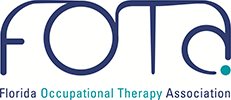The new normal: Supporting post-pandemic independence within the home and community health setting

The New normal: Supporting post-pandemic independence within the home and community health setting
Since March 2020 the world has continued to evolve and change to meet the restrictions and demands of what is known as COVID-19. Twenty-one months later we continue to track outbreaks and attempt to prevent the spread through handwashing, masking, and social distancing, as well as develop treatments that are scientific and alternative. Both healthcare workers, including occupational therapists, and clients are experiencing difficulties in the areas of occupations of work, self-care, and leisure due to COVID-19 and the associated restrictions (Sithong, 2021). However, with states lifting restrictions, clients and practitioners are hoping to return to their pre-pandemic lives despite the occupational imbalances and hardships they have undergone.
Home and community health occupational therapy practitioners have been challenged to support clients’ physical and mental health needs even before the pandemic. However, coming into this new post-pandemic world many people will have experienced countless stresses, losses, and traumas during the pandemic, as well as a growing awareness of the social aspects interfering with occupational justice. Many will have lost friends and family due to the virus, in addition to the possible loss of their job, closure of business, and/or housing instability. Marriages and other relationships may have failed due to the stress of COVID-19, including the associated restrictions and self-isolation. The pandemic has also shown individuals and populations who are marginalized have been further affected by the pandemic due to some having decreased or no access to healthcare services, as well as increased financial difficulties.
Research proposes a high percentage of people during the pandemic have developed COVID stress syndrome which encompasses fear of infection, fear of touching surfaces or objects that could be contaminated, xenophobia (fear of foreigners having the virus), COVID-related checking and reassurance-seeking, and traumatic stress symptoms such as intrusive thoughts and nightmares (Taylor & Asmundson, 2020). Even people who continue to go out within the community may have developed tendencies for germaphobia and strictly avoiding the touching of surfaces and/or people. Subtle long-term effects have arisen, only previously seen with survivors of the Great Depression, for instance, becoming more frugal, increasing self-sufficiency with activities for the household, and obtaining a disproportionate amount of non-perishable food and household supplies (McManus, 2010). There are also concerns throughout the medical and behavioral health systems about inadequate resources to provide treatment to much of the population during and the after the pandemic despite online and telehealth accessibility flourishing over the past 12 months.
With the vast unknowns of the pandemic, we are now seeing an increased number of clients diagnosed with long haul COVID symptoms. Research has shown approximately 10% of clients diagnosed with COVID-19 will develop long haul symptoms which equates to roughly 3.2 million Americans (Schreiber, 2021). Quantitative longitudinal studies, 6 months after the diagnosis, indicate 63% have fatigue and muscle weakness, 26% have sleep disturbances, and 23% have a new onset of anxiety or depression (Schreiber, 2021). Physical symptoms are associated with sedation, i.e. ventilation, and immobilization for days or weeks. The mental health and wellness symptoms can be associated with a lack of interaction weather that may be with loved ones due to visitor restrictions, medical professionals secondary to staffing shortages, or the dissonance of recovery. Cognitive symptoms are occurring due to delirium of intensive care unit stays, loss of time (days, weeks, months) when intubated, and prolonged time on medications.
Clients who are living with long haul COVID symptoms, due to lack of awareness by medical professionals, are often faced with dismissal of their symptoms which leads to an increased fear and anxiety of unknown outcomes. Caregiver views and perspectives of COVID-19 can also influence a clients’ recovery in a positive or a negative manner (Schreiber, 2021). Unfortunately, clients with long haul COVID-19 symptoms are facing increased loneliness due to the inability to have shared experiences with others, as well as experiencing sympathy versus empathy from friends, family, and loved ones. Schreiber (2021, pg. 62) stated, “As a society, we spend freely on saving lives in the ER and ICU but the money dries up when the patient needs it the most- after they have survived.” Occupational therapy practitioners fall into the latter category of after a client has survived. As home and community health providers, occupational therapists have the unique ability to help clients not only survive but thrive by establishing/restoring, altering, adapting, preventing, or creating opportunities for our clients to again participate in meaningful occupations during and after recovery of COVID-19.
The Occupational Therapy Practice Framework Fourth Edition (OTPF4) provides an opportunity for occupational therapy practitioners to address the environmental and personal factors our clients face regarding COVID-19 restrictions, as it now includes human-caused events under environmental factors (American Occupational Therapy Association [AOTA], 2020). This is described as a disturbance caused by humans within the natural environment that results in the disruption of day-to-day life which has occurred due to the COVID-19 pandemic (AOTA, 2020). Through examining this context, practitioners gain a better understanding of how environmental and personal factors of COVID-19 have enabled or hindered engagement in meaningful activities, in addition to the how and why people now participate in certain activities. It is important occupational therapy practitioners consider each of these factors in regards to the pandemic when providing treatments focused on manipulating and adjusting environments in order to increase occupational engagement and improve overall quality of life.
Please like our Facebook page, i.e. Florida Occupational Therapy Association: Home and Community Health at www.facebook.com/FOTAHomeandCommunityHealthSIS/
References
American Occupational Therapy Association [AOTA]. (2020). Occupational therapy practice framework: Domain and process (4th ed.). American Journal of Occupational Therapy, 74, 7412410010p1– 7412410010p87. Retrieved from https:// doi.org/10.5014/ajot.2020.74S2001
Freedman, V., & Spillman, B. (2014). The residential continuum from home to nursing home: Size, characteristics and unmet needs of older adults. Journal of Gerontology, Series B: Psychological Sciences and Social Sciences, 69(Suppl. 1), S42-S50. doi: 10.1093/geronb/gbu120
McManus, D. (2010). Great recession’s psychological fallout. Retrieved from https:// www.latimes.com/archives/la-xpm-2010- jul-15-la-oemcmanus-economy-pessimism20100715-story.html
Schreiber, M. (2021). Treating patients with long covid. Monitor on Psychology, 52(5), 62. Retrieved from https://www.apa.org/ monitor/2021/07/treating-long-covid
Sithong, C. (2021). How a worldwide pandemic can move the needle for occupational therapy home assessment practice. SIS Quarterly Practice Connections, 6(2).
Taylor, S., & Asmundson, G. (2020). Life in the post-pandemic world: What to expect of anxiety-related conditions and their treatments. Journal of Anxiety Disorders, 72. Retrieved from https://doi.org/10.1016/j. janxdis.2020.102231
